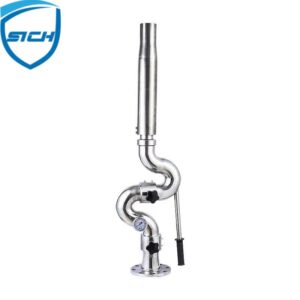Fire monitor systems interact with building codes and regulations in several ways to ensure compliance with safety standards and requirements. Here’s how:
- Design and Installation Standards: Building codes typically outline specific requirements for the design and installation of fire monitor systems. These standards may include specifications for the types of monitors, their placement, water supply requirements, and connection to other fire protection systems.
- Performance Standards: Building codes often stipulate performance standards that fire monitor systems must meet to effectively suppress fires and protect occupants and property. These standards may include criteria for flow rates, coverage areas, and response times.
- Testing and Maintenance Requirements: Building codes typically require regular testing and maintenance of fire monitor systems to ensure they remain in proper working condition. This may involve periodic inspections, functional testing, and record-keeping of maintenance activities.
- Compatibility with Other Systems: Fire monitor systems must be compatible with other fire protection systems installed in the building, such as fire alarms, sprinkler systems, and suppression systems. Building codes may specify requirements for integration and coordination between these systems to ensure comprehensive fire protection coverage.
- Accessibility and Visibility: Building codes often address accessibility and visibility requirements for fire monitor systems to ensure they can be easily accessed and operated by emergency responders. This may include requirements for clear signage, unobstructed access paths, and visibility from key locations within the building.
- Occupancy and Hazard Classification: Building codes may consider the occupancy type and hazard classification of a building when prescribing requirements for fire monitor systems. For example, high-hazard occupancies may require more robust fire protection measures, including larger or additional fire monitors.
- Emergency Response Planning: Building codes may require the development and implementation of emergency response plans that outline procedures for the use of fire monitor systems during fire emergencies. These plans may specify roles and responsibilities, evacuation procedures, and coordination with local fire departments.
- Permitting and Approval Processes: Fire monitor systems typically require permits and approvals from building code authorities or fire departments before installation or modification. Building codes may specify the documentation and review processes necessary to obtain these permits and approvals.
- Updates and Amendments: Building codes are periodically updated and amended to reflect advancements in fire protection technology, changes in building construction practices, and lessons learned from past fire incidents. Fire monitor systems must comply with the latest code requirements to ensure optimal safety and protection.
Overall, fire monitor systems must adhere to building codes and regulations to ensure they are designed, installed, and maintained in a manner that effectively mitigates fire risks and protects life and property within buildings. Compliance with these requirements helps ensure the safety and well-being of building occupants and facilitates efficient emergency response efforts during fire emergencies.
